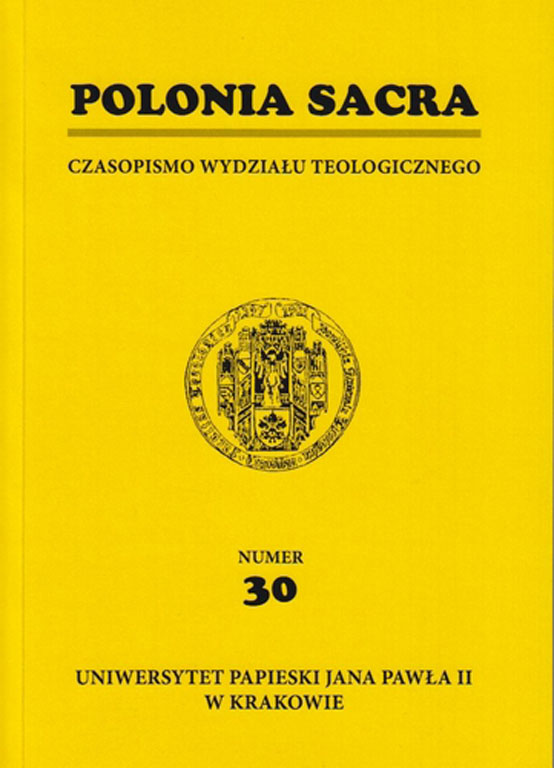Komunia z Bogiem istotą chrześcijańskiego powołania
DOI:
https://doi.org/10.15633/ps.541Abstrakt
Union with God constitutes the essence of the Christian calling for holiness. Only God is holy. If one wants to be holy, there is no other way from that to unite with God. Such wisdom flows from God’s Revelation and from the teaching of the Church and mystics, particularly those Carmelitan ones mentioned in the article. The dynamic of the communion with God has been considered here according to three stages of sanctification: the starting, final and intermediate. The process may begin owing to the free experience of God, who is initiating the way leading to Him. Typical examples of that are: St. Paul, St. Theresa of Avila, St. John of the Cross and St. Theresa from Lisieux. In the end of the process mystics enjoy anew a deep communion with God, but on the incomparably higher level than the initial one, which is most often represented through bridal symbolism. To achieve that stage requires the process described by mystics in terms of marital union with Christ. Such a vision of sanctification results in the adequate educational pedagogy. The Carmelitan doctors seem to direct efforts of the faithful towards personal union with God due to faith, hope and love.Pobrania
Opublikowane
2012-07-07
Numer
Dział
Artykuły
Licencja
Prawa autorskie (c) 2012 Jerzy Wiesław Gogola

Utwór dostępny jest na licencji Creative Commons Uznanie autorstwa 4.0 Międzynarodowe.
Autorzy publikujący w czasopiśmie udzielają jego wydawcy zgody o następującej treści:
- Autor zachowuje autorskie prawa majątkowe do utworu, a jednocześnie udziela wydawcy czasopisma zgody na jego pierwszą publikację w wersji drukowanej i wersji online na licencji Creative Commons Uznanie autorstwa 4.0 Międzynarodowe oraz zgody na wykonywanie opracowań, w tym przekładów.
- Autor ma możliwość udzielania zgody niewyłącznej na opublikowanie utworu w wersji, która ukazała się w czasopiśmie (np. zamieszczenia go w repozytorium instytucjonalnym lub opublikowania w książce), wraz z informacją o jego pierwszej publikacji w czasopiśmie.
- Autor może umieścić swój utwór online (np. w repozytorium instytucjonalnym lub na swojej stronie internetowej) jeszcze przed zgłoszeniem utworu do czasopisma.
Jak cytować
Gogola, J. W. (2012). Komunia z Bogiem istotą chrześcijańskiego powołania. Polonia Sacra, 16(1), 187–198. https://doi.org/10.15633/ps.541

